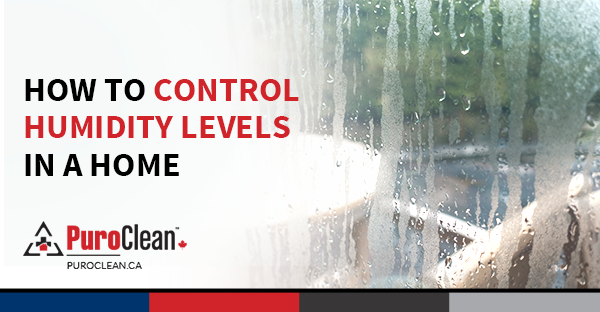The PuroClean Blog
How to Control Humidity Levels in a Home
 Cooking and showering add a lot of moisture in a home and may cause health risks from dust mites and mould, reduced comfort and structural damage. While air conditioners are great for reducing indoor humidity, there are other inexpensive ways to control the humidity levels in a home. Here are some of them:
Cooking and showering add a lot of moisture in a home and may cause health risks from dust mites and mould, reduced comfort and structural damage. While air conditioners are great for reducing indoor humidity, there are other inexpensive ways to control the humidity levels in a home. Here are some of them:
- Keeping the relative humidity below 55% throughout the entire house. If the thermostat doesn’t display humidity, a hygrometer can be used instead.
- Installing exhaust fans in areas that produce high levels of moisture, such as the kitchen, bathroom and laundry room.
- The exhaust fans should vent to the outside, and not in the attic or basement, where moisture can lead to mould infestation.
- Taking shorter and colder showers and using a low flow showerhead to decrease the amount of steam produced.
- When cooking, slow cookers should be used more often, as they release less steam. In addition, pots should be covered with lids to trap in the steam.
- Keeping firewood outdoors, as it contains considerable amounts of water that increases humidity if kept indoors.
- If the high humidity levels in the home are hard to control, a dehumidifier should be used. When the dehumidifier is working, the doors and windows should be kept closed.
- If the humidity levels in the home are too low, a humidifier – that’s appropriate for the size of the home – will help increase the humidity.
- Reducing the number of plants in the home, as they actually release more moisture than they absorb. Overwatering plants should be avoided.
Ventilation is essential to reducing the amount of indoor humidity. Tips for home ventilation can be found here and 10 ways to keep indoor air fresh are available here. The PuroClean team stands ready to provide professional restoration services to any property affected by fire, water or mould damage.
Follow us on Twitter, Facebook, Google+ and LinkedIn to get our notifications!
July 21, 2016


